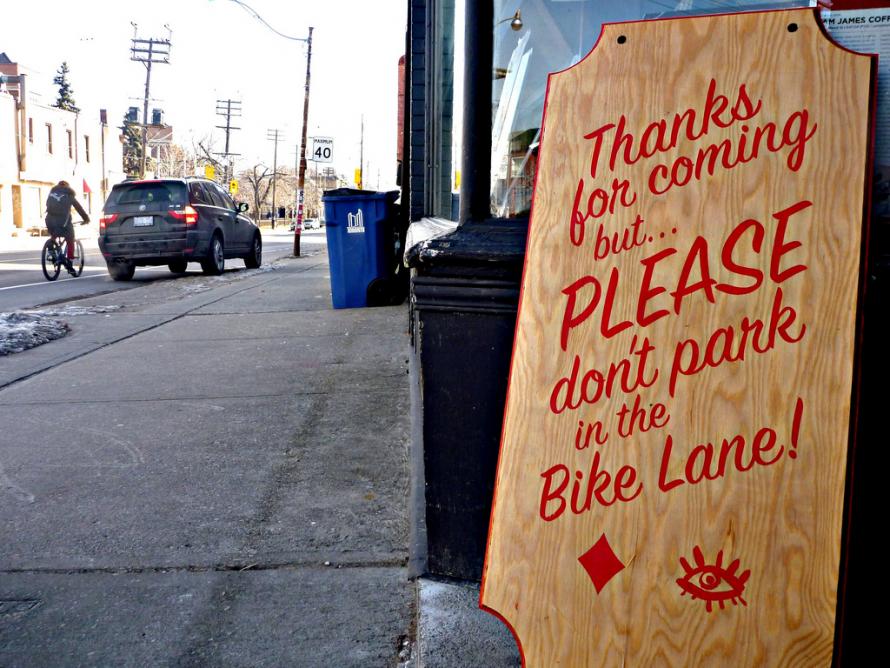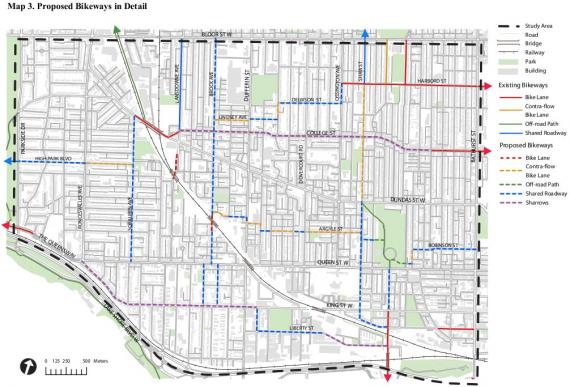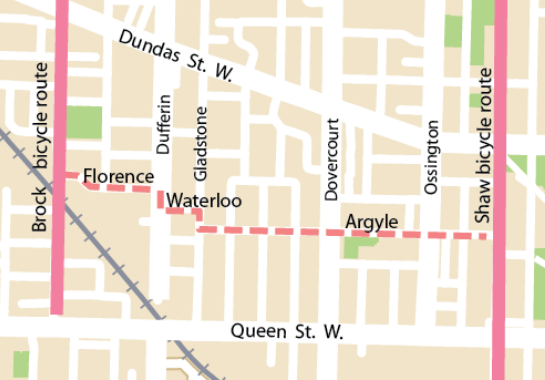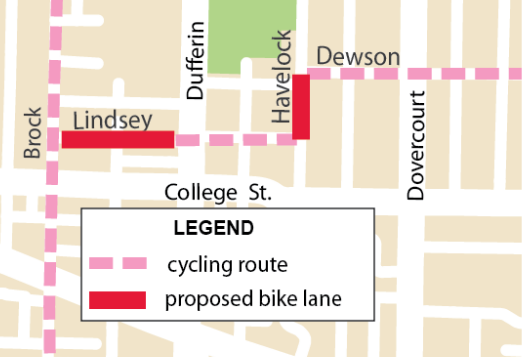The Ontario Liberals promised $25 million towards cycling infrastructure this year. While this is certainly better than zero dollars and while cycling organizations such as Share the Road did good to get excited about it, I'm going to look at the gift horse in the mouth. I'm here to provide the horse droppings on the parade (or some such metaphor).
For the 2013-14 fiscal year Ontario dedicated about $6 billion towards transit and highways. The $25 million for cycling infrastructure is over three years and spread out across a population of 13.5 million. That comes out to 60 cents a person per year. Compare that to $450 per person per year for transit and highways!
The Ontario government loves cycling about 0.1% as much as they love big transit and highway projects.
I'm well aware that province-wide that cycling rates are low (though they do increase quite a bit when we include all the recreational cycling), the rate is still an order of magnitude higher than 0.1%. Toronto as a whole is around 2% but there are parts of central Toronto that are almost 20%.
While the announcement is certainly good news, it is just barely so. It will have a minor impact on transportation choices in this province. The best thing the government could do would be to pick just 2-3 big projects in cities where there is a sweet spot of a high impact on bike mode share and a willing city government to quickly implement the change. Otherwise the money might be spread too thinly to even be noticeable.
Perhaps if cyclists across this province went around our neighbourhoods and asked for 60 cents from all our neighbours we could double this tiny fund in no time.
The good news, as cycling advocates have pointed out, is that Ontario will now incorporate cycling infrastructure into all provincial highway and bridge work.
“The experience of jurisdictions where they do that is it actually doesn’t cost you any more because… you basically integrate it. You can see it on Highway 7 in Toronto: You’ll see the Viva (bus) lines, you’ll see a sidewalk and you’ll see a roadway with several lanes on it and you’ll see a cycling trail. From now on, we’ll just simply build it in like we build sidewalks unless there’s a cost reason,” he said.
The exception will be where it doesn’t make sense, such as in Brampton, where there are sidewalks along highways that aren’t being used. Those are being re-purposed as active transportation corridors.
This will have a longer term impact even though the changes will be slow to be seen since it doesn't involve actual retrofitting of highways that don't have other work scheduled. And it doesn't seem to include any policy directive for municipalities to do the same for their own infrastructure projects. Neither has the province promised to make implementing cycling infrastructure easier. Councillor Denzil Minnan-Wong has been frustrated--as have most cyclists--that the implementation of protected bike lanes on Richmond and Adelaide has dragged on for years, partly because of the onerous environmental assessment process:
The public, he said, doesn’t understand the “convoluted” environmental assessment process that means it can take four or five years to realize a project.
Let me pat you on the back Minister Glen Murray, but we've only just started.




